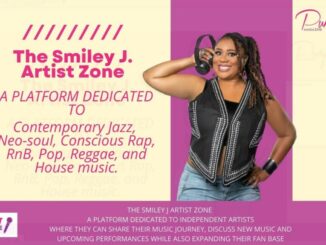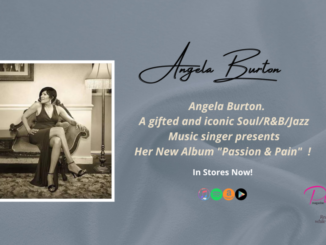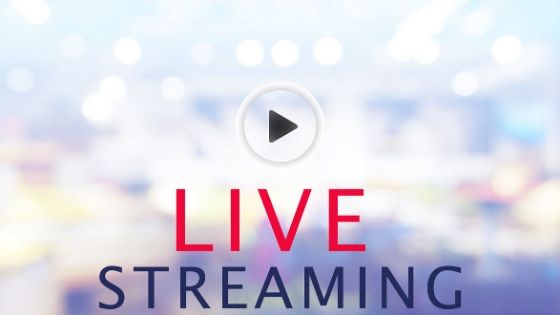
Just a couple months ago, it would have seemed impossible to imagine a world in which everything from local dive bar gigs to massive festivals would disappear. Yet here we are, smack in the middle of a pandemic that’s more or less canceled the rest of 2020.
Between social distancing requirements, stay-at-home orders, and no real idea of when live performances will become a viable source of income again, it’s never been more important to turn to online solutions for fan engagement and revenue.
Yes, these are scary and utterly unpredictable times we’re living in right now. But you’re a musician; you have creativity and resiliency in your blood, and you will come out okay on the other side of this.
As you’ve probably noticed, tons of artists have flocked to live streaming in the last few weeks, and for good reason. It’s one of the most effective and reliable ways to maintain a sense of community with your fans and give them the opportunity to support you.
So we’ve put together this guide to live streaming for musicians to walk you through it all, step by step.
What should musicians stream?
Live performances are the most obvious and are usually a safe bet for a stream, but this is a great time to get creative and experiment with different formats or topics. There are so many interesting and fun ways to engage with your fans and make them excited to tune in.
“We’re living in a day and age where people want to know artists for who they are, not just what they do,” says Kendall Creedon, music & live manager at Scale Management. “Live streaming is a great way for your audience to really interact with you as a person and start seeing parts of your personality that they may not have known about before. Once they start following you for you, they’ll become those diehard fans every artist dreams of having.”
Songwriting sessions, home studio tours, masterclasses, Q&As — if you’re comfortable sharing it, give it a shot! You never know what might resonate with someone watching. You can even mix and match — maybe play a couple songs, and then pause to have a casual chat with the audience for a few minutes as you read through the comments section to shout people out and answer questions.
Whatever you decide on, try to emphasize the live interaction aspect as much as you can. It’ll feel more intimate and personal, and less like a random YouTube video of a performance that they could watch anytime. Give people a reason to watch you live and feel like they’re a real part of the experience.

What kind of setup is best for live streaming?
Before you dive into any hardware or software decisions, think about the physical space you plan to stream from, and what your needs might be. If the acoustics in your room are good and you want to try a basic live stream where you’re just talking, all you’ll really need is your smartphone and a strong, stable internet connection.
Regardless of the actual content of your live stream, it’s always a good idea to put some effort into the background and lighting. This could be as simple as a floor lamp next to you and a non-distracting wall or curtain behind you.
If you’re streaming a performance and you want it to look and sound more professional, it’s worthwhile to invest in an audio interface, a decent microphone, and a high-definition external webcam.
If you’re streaming a performance and you want it to look and sound more professional, it’s worthwhile to invest in an audio interface, a decent microphone, and a high-definition external webcam.
Even if your laptop has a solid built-in camera, a separate webcam will give you more flexibility to try out different angles. Also, be sure that you choose a high-speed internet provider so there are no delays as you livestream. The good news is that services like SmartMove can connect you with the best internet service provider in your area. They even offer great internet discounts for those in the military community. Something that can make those mandatory and regular moves that little bit easier!
Don’t worry if you need to rely on your phone or tablet — there are still ways to make your live stream sound great. An audio adapter that allows you to use an external mic with your device is one of the best accessories to have on hand, and will make a world of difference.
It’s easy to broadcast directly from apps like Facebook and Instagram, but if you want to mix multiple audio sources, overlay graphics, or generally have more control over your production, you can use free software like OBS. OBS is open source and compatible with Mac, Windows, and Linux. These guides will help you get started.
Which platform should musicians use to live stream?

All live streaming platforms allow you to fundamentally do the same thing. But the one you choose can make all the difference in how successful the stream is.
The first question to ask yourself is: Where is my audience most likely to already be?
Do you get a lot of engagement on Facebook? Do they love Twitch? Whatever the case may be, make it as easy as possible for your fans to tune in by going live where they’re hanging out anyway.
Equally important in choosing the right platform is to really think about what your primary goal is for the live stream.
- Is it important to you that it’s a ticketed event?
- Are you hoping people will donate money during the stream?
- Are you trying to get to know your fans better and create a deeper sense of community?
- Are you planning to do something highly interactive like a Q&A or AMA, or do you want it to feel more like a concert?
Here’s a rundown of eight of the most popular live streaming platforms — both free and paid — to help you decide.
Facebook Live
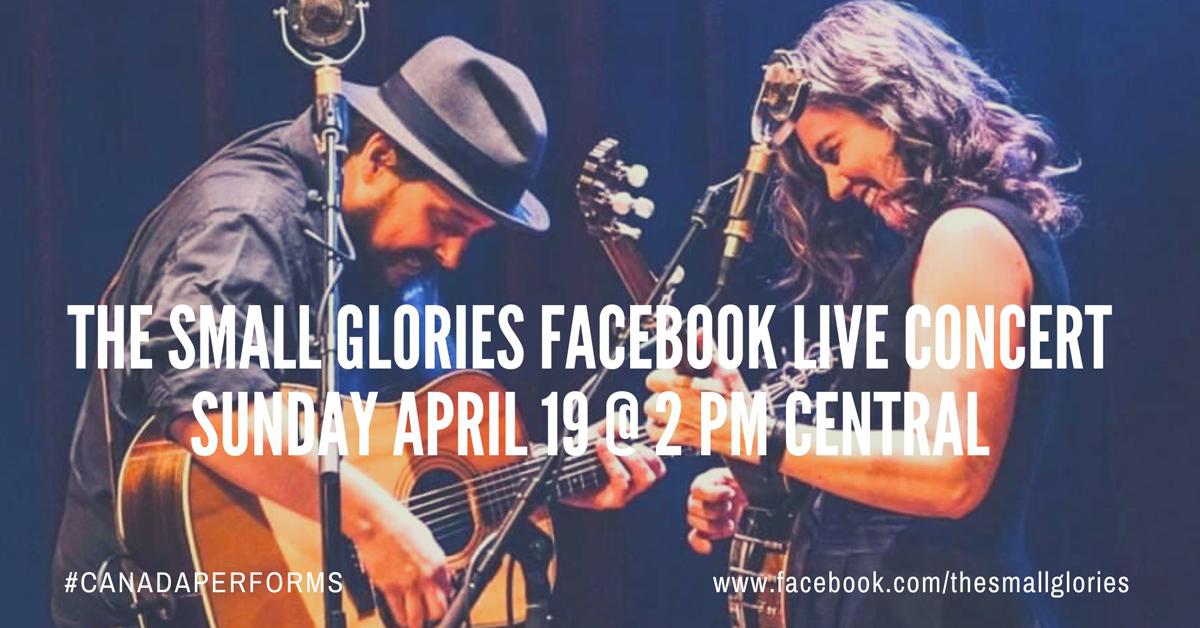
Is it free? Yes.
Desktop or mobile? Both.
Who is it best for? Artists with a strong Facebook presence who are looking for a quick and easy way to go live.
How do you go live? It’s super easy to start a live stream from your personal page, fan page, group, or with streaming software like OBS.
Can you do a test before going live? Yes. You can go live and set the video to display to ‘only me.’
Can you schedule live streams in advance? Yes, up to seven days in advance. You can create Facebook events for them as well.
Will notifications be pushed out to your audience? Yes.
Will the video be saved afterwards? Yes, it’ll be saved to your Facebook page.
What’s the best way to monetize it? Add a virtual tip jar by dropping your PayPal.Me link, Venmo username, or a link to your website in the description of the video, as well as in the first comment which you can pin to the top.
Let fans know that they have the option to support you if they’d like, but don’t go overboard with begging people to donate. A better way to keep it top of mind for viewers is to set up push notifications so that when someone tips you, you can thank them in real time and be genuine about how much you appreciate it.
Instagram Live
Is it free? Yes.
Desktop or mobile? Mobile only.
Who is it best for? Artists with a strong Instagram presence who are looking to do a simple, low-key broadcast for under an hour.
How do you go live? Swipe right from your feed, then scroll to “live” and tap it when you’re ready. (More details here.)
Can you do a test before going live? Not really. But you can record a short video and watch it back to test the sound and visuals.
Can you schedule live streams in advance? No.
Will notifications be pushed out to your audience? Yes.
Will the video be saved afterwards? No, it’ll disappear after 24 hours (unless you save it to your camera roll immediately after ending the live stream).
What’s the best way to monetize it? Same idea as with Facebook Live, but you’ll want to drop the donation or website link in your bio for easiest access.
YouTube Live
Is it free? Yes.
Desktop or mobile? Both.
Who is it best for? Artists who want a high-resolution live stream (4K supported) and built-in revenue share options.
How do you go live? There are quite a few options — here’s everything you need to know.
Can you do a test before going live? Yes. You can play a private stream, watch it back, and then go live with a public stream.
Can you schedule live streams in advance? Yes, you can schedule them for any date and time.
Will notifications be pushed out to your audience? Yes, as long as subscribers have notifications turned on for your channel.
Will the video be saved afterwards? Yes, it’ll be saved to your YouTube channel.
What’s the best way to monetize it? You can enable ads, use Super Chat, or set up a monthly membership for your YouTube channel (if you meet the eligibility requirements).
Stageit
Is it free? Yes, but they keep a percentage of revenue. Usually it’s based on how much you earn, but for the time being they’ve upped all artist payouts to 80%.
Desktop or mobile? Both.
Who is it best for? Artists who want to replicate the feeling (and income) of an intimate in-person performance as closely as possible — a 30-minute show with monetization front and center.
How do you go live? Sign up for an account, click “become a performer” in the navigation bar, then click “performer tools,” and finally “create a show.”
Can you do a test before going live? Yes. You can create a “Soundcheck” before doing the live stream.
Can you schedule live streams in advance? Yes.
Will notifications be pushed out to your audience? Not automatically, but you can send ticket holders a reminder email through the platform between one day and one hour before your show.
Will the video be saved afterwards? No.
What’s the best way to monetize it? You can sell fixed-price tickets or “pay what you can” tickets. Fans can also tip you at any point during the live stream.
Twitch
Is it free? Yes.
Desktop or mobile? Both.
Who is it best for? DJs especially, but any artist looking to do longer broadcasts with top-notch audio/video quality and built-in revenue options.
How do you go live? Sign up for an account, then follow these instructions to go live from your preferred device.
Can you do a test before going live? Yes, you can create a channel just for yourself for testing. Or you can try their Inspector tool > run a stream test.
Can you schedule live streams in advance? No, but we highly recommend setting a consistent streaming schedule for success on Twitch. Post the dates and times of your upcoming streams on your Twitch channel page and all of your other social media pages.
Will notifications be pushed out to your audience? Yes, and you can even personalize them!
Will the video be saved afterwards? Not automatically, but you can enable video-on-demand storage (14 days of storage for regular broadcasters), or create highlights to save certain content on your channel indefinitely. Learn more here.
What’s the best way to monetize it? Work towards becoming an affiliate or partner to earn revenue from subscribers, ads, and Bits. Bandsintown has also partnered with Twitch to fast track becoming an affiliate.
Check out: Twitch for musicians: All your live streaming questions answered
*Special offer for Bandzoogle members: Get 40% off the Twitch for Musicians Online Course or eBook with the coupon code BZ40.*
Vimeo
Is it free? No — you’ll need the premium plan to live stream, which costs $75/month.
Desktop or mobile? Both.
Who is it best for? Artists with a budget who are looking for lots of built-in features, simulcasting to other platforms, a robust analytics dashboard, and high-quality streaming.
How do you go live? Follow these instructions.
Can you do a test before going live? Yes. They offer the option to ‘enable stream preview’ at low-latency, allowing you to check the levels right before you go live.
Can you schedule live streams in advance? Yes.
Will notifications be pushed out to your audience? Yes, you can choose to send out a push notification or an email to anyone following your channel.
Will the video be saved afterwards? Yes.
What’s the best way to monetize it? You can sell tickets commission-free to your live stream directly through your Bandzoogle website. Simply set up an event in your Calendar feature, then add the live streaming link into the Live stream link field. When a fan buys a ticket, the live stream information is included on their e-ticket.
Note: You can set up a password-protected page on your website, then embed the Vimeo live stream in an HTML feature. Add the full page url (mymusic.com/livestream) as the live stream link, and include the password in the live stream information field in the event details. This will drive viewers to your website directly, so they can also shop for music and merch while watching your show.
Crowdcast
Is it free? No — plans range from $20/month to $139/month.
Desktop or mobile? Both.
Who is it best for? Artists looking for a painless one-stop shop, from automatic registration pages to engagement tools, to advanced analytics.
How do you go live? This quick video covers all the essentials.
Can you do a test before going live? Sort of. They have a setup checklist to run through (check the mic, the ability to screen share), but no video preview to watch back and listen to.
Can you schedule live streams in advance? Yes.
Will notifications be pushed out to your audience? Everyone who registers will automatically receive a confirmation email and a 10-minute reminder. Also, anyone following your profile will get notified when you go live.
Will the video be saved afterwards? Yes, attendees will have access to a replay, and you can also download an HD video of your live stream.
What’s the best way to monetize it? On the higher-priced plans, you can sell tickets, but be sure to factor in the fees. Or, you can of course sell tickets commission-free for the live stream directly through your Bandzoogle website.
Note: You can also drive fans to your website to watch your Crowdcast live stream. Set up a password-protected page. Then, add the full page url (mymusic.com/livestream) as your live stream link, and include the password in the live stream information field for your event. You can then embed the Crowdcast live stream video on your page with an HTML feature. This will get people visiting your website to watch your stream, and sticking around to shop for music and merch.
Zoom
Is it free? There is a free plan, but if you’re expecting more than 100 participants or hoping to stream for more than 40 minutes, you’ll need to upgrade to a paid plan starting at $14.99/month. Tip: Be sure to adjust the pre-meeting settings to ensure a secure broadcast.
Desktop or mobile? Both.
Who is it best for? Artists who want to host a more intimate event with a lot of fan interaction.
How do you go live? Check out the quick start guide here, and learn how to properly set up for a broadcast here. You can also stream your Zoom meeting on Facebook Live or YouTube Live with any paid plan.
Can you do a test before going live? Sort of. You can hop on a meeting and play to check your mic, but there’s no video preview to watch back.
Can you schedule live streams in advance? Yes, you can see all of the options here.
Will notifications be pushed out to your audience? No, but anyone who’s been invited to a Zoom meeting can choose to enable reminders.
Will the video be saved afterwards? Local recording is available to free and paid Zoom subscribers; cloud recording is automatically enabled for paid subscribers only.
What’s the best way to monetize it? You can sell tickets directly through your Bandzoogle website. Simply add the Zoom link and meeting password into the Live stream link and Live stream information fields in the Calendar feature. When a fan buys a ticket to your live stream event, that information is included on their e-ticket.
Set up a website to easily sell tickets commission-free to your live stream events. Build your website and start selling tickets today.
What are the most important best practices for live streaming?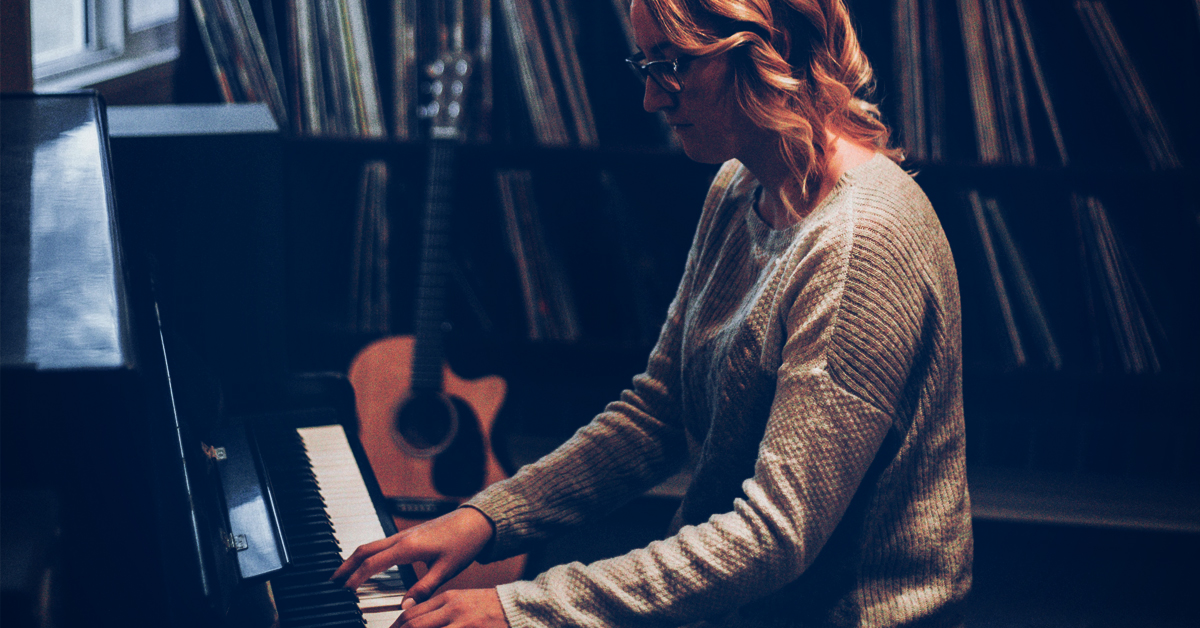
Be as consistent as possible
Pick a daily or weekly streaming schedule that works for you, and stick to it as best you can. Let your fans know when to expect your next stream, give them something to look forward to, and always start on time (regardless of how many viewers there are). Consistency is the number one way to build an engaged live streaming audience.
Do a test run first
The more elaborate your setup is, the more important this is. Some technical difficulties may arise that are out of your control, but do your best to minimize the chance of something going awry that’s in your control.
At the very least, this means testing your internet speed, closing out of any programs that you don’t need, double-checking your audio and video settings (especially if you’re using an interface with external gear), and asking a friend to make sure everything looks and sounds exactly the way you want it to.
Once you’re live, periodically glance at the comments in case people are posting that they can’t hear or see you so that you can resolve it quickly.
The longer, the better
Definitely experiment with the length and content of your live streams, but try to work at least a few longform streams into the mix. Why? “The more time you stream, the more people will be able to tune in,” says musician Javier Morales (aka James R. Basterd on Twitch), who’s been streaming for the last few months as his main source of income.
He recommends going live for at least an hour at a time, mixing performances with Q&As, studio tours, and personal updates to fill the time in an engaging way. Have some fun with it, and it’ll fly by!
Make your fans feel seen
Take the time to acknowledge people who comment, and address them by name. Answer their questions. Take requests. Thank them for showing up. Make them feel like they’re an indispensable part of the experience in any way you can.
Check your analytics
Some platforms offer more detailed analytics than others, but it’s always smart to look at whatever data you have access to. See if you can pick up on any trends, such as when your audience was most engaged or where views started to dip. You can use that information to your advantage the next time you go live.
What are the best ways to promote your live stream?
Unless you have an enormous following, we wouldn’t recommend spontaneously going live and expecting people to show up. Whether you’re just trying out a one-off live stream or you want to dive right in with daily broadcasts, planning and promoting in advance is the best way to go.
Sending an announcement (plus a couple of reminders as it gets closer) to your email list is a great place to start. Shout it from the rooftops on all of your social media channels — and if your live stream will be taking place on one of those channels, give it some extra attention in your promos.
Don’t just keep copy and pasting the same announcement over and over, though — that’ll get old really fast. Mix it up with some teaser videos, fun graphics, countdown reminders, and little hints at what you’ll be playing or discussing.
If you’re planning to invite any special guests to join you on your live stream, even better! Team up on some cross-promotion for a bigger impact, and continue supporting each other even when you’re not doing an event together.
Also, take note of whether your chosen streaming platform will save the video, and use that to your advantage either way. If a recording won’t be publicly available afterwards, emphasize the importance of actually showing up while you’re live so that your fans make it a bigger priority.
On the other hand, if the video will be automatically saved to your channel after you end the broadcast, you can extend the life of your live stream by promoting little highlight clips from it and linking to the full video.
How can you help make it a better experience for viewers?
A poor internet connection on either side is enough to ruin an otherwise great live stream. So in addition to making sure your own connection is up to snuff, remind fans to check their speeds as well to make it a seamless experience from start to finish. Again, an ethernet connection is always best, if available.
If your live stream will consist of mostly talking and sound quality isn’t all that important, your fans should be perfectly fine tuning in on their phones or laptops. But if you’re trying to emulate a live concert experience, you may want to suggest that they listen with headphones or external speakers, if they have them.
To make it even more fun, your fans could use Google Chromecast or Apple AirPlay to stream straight from a device to a TV. Just keep in mind that if you’re trying to maximize interaction, you’ll ideally want your viewers tuning in from a device where they can easily comment.
Final thoughts
Live streaming is a chance to broaden your reach, engage with your fans, and hopefully make some money from your music in the process. Try experimenting with different platforms and formats to see what works best for you. There are many options to choose from, and with each one comes the opportunity to challenge yourself as an artist.


